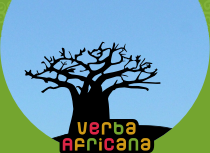Kyaso
Kyaso is a ngoma native to Pemba Island. Even if the choreography reveals the intent to perform it in specific contexts, which are not categorical ritual ones, some interesting elements stand out to help us in comprehending the meaning of ngoma performances in contemporary Zanzibar. There is an inseparable tie between the values and the costumes characterizing Zanzibar culture and its musical production which reflects, creates, contests and spreads them.
“It is a forum that allows for a dual-analysis where both I as the ethnographer [outsider] and the Swahili people as participants [insiders] observe, participate in, and evacuate the performance of Swahili cultural images. This performance creates a meta-social commentary on the larger Swahili culture.”1
The completeness of this artistic genre, in which the dialectical relationship between the performers and the audience becomes the focus of its social colloquialism, is expressed through gestures and a symbolism which make it unique. In this context, the gendered ideology of society, and the consequent relationships among the subcultures which constitute it, contaminates performance both in its physical/aesthetic and theoretical/functional aspects. In the meantime, performance influences gender relations, confirming and contesting the balance among the reference subcultures. The essential requirement is that, while the difference between the sexes is a biological fact, the specific meaning which is attributed by the society to this difference is a human cultural invention: if sex is a biological condition, therefore, gender is a cultural invention.2
“[...] Because gender is an essential feature of changing productive relationships, there are certain sites, certain spaces, where gendered roles are discussed, debated and perhaps pushed in new directions.”3
Ngoma can can give expression to the limits of the "proper' female sexual behaviour and they can underline accepted changes in a woman's social status. The symbolism used in communication among the various social groups is easier to comprehend in rituals, which are structured and standardized practices, justified by a commonly accepted historical past, and occurring in a context imbued with symbolic meaning.4
Women are the protagonists of rituals referring to the growth of female subjects in the community and of rituals where they affirm their position of power towards the other subcultures to which they are related in social life.
“In Zanzibar society rituals represent an open ground on which existing hierarchies and social divisions can be challenged or reinforced, depending on the situation and the goals of the participants. Through these performative and discursive contexts women and men express — verbally and non-verbally — their understanding of ongoing changes both concerning life in general, and within political and economic hierarchies.”5
This ngoma is representative of the relationship between the gendered subcultures that characterise the Swahili communities’ society: since it was performed during wedding celebrations, the interrelations between female and male performers in the economy of the performing event explains how the female subject, as well as the male, accepts her new role in the community. The two different formations (the circle for the men, and the line for the women) are mixed in a unique context, despite the fact that in the past the different formations referred to different ngoma performances.6
The costumes assume a fundamental meaning in the performance because they remind us of the gender relations. The use of the kanga7 is the most meaningful. The way to wear kanga during a performance, the gesture of tieing the two differenlty coloured parts to the hip, refers to the woman's position in society, the teachings received during the initiation and it accentuates the hip rotation, a frequent gesture in Zanzibar ngoma.
The male dancer, in his mime and in the movements’ plasticity, reports his social position in the performance; an example is the use of the stick (fimbo) in ngoma ya Kyaso:
Mwanamme si mtu ya kuchezewa, kwa maana hiyo si mtu...mara wanaume wa kizanzibari wapigaji hawataki mchezo, kwa maana hiyo mwanmme usimchezee, ndo kama vile. Kwa bakora ndo mwenyewe.8
Man is not one who can be easily joked, this is why he is not...sometimes Zanzibari men are pugnacious, they don’t wont to be joked,so don’t joke a man, or something like this. His imagine with the stick is perfect.
The woman confirms her position of strength with which she exploits her potential influence on the man’s will:
“Women’s strategies are a response to the distribution of power and authority and will differ, I suggest, depending on whether women are able to make decisions or whether decisions are made by men. Since women are often not in positions of authority, a key concept in understanding their strategies is that of influence.”9
The song starts with two verses which form the introduction of every ngoma native to Pemba. The reference to the woman's strength and condition (kamlinde mke nawelewe) stands out from the beginning. The song speaks about love and the relationship between a wife and her husband (unipe mapenzi yangu Naima...), and about the preparation of the woman for the marriage (jiwe, jiwe jiwe limpambwae...), an important social event which changes her social role within the community. The song remembers the teachings received during the initiation: chagua ukipendacho ukionacho machoni, kama huna haja nacho, fanya kama hukioni. Despite the commune way of thinking, these teachings report not only the duties of a good wife, but also her rights, her freedom in choosing and wanting, especially in the domestic context, in which the ways of female expression are more directly understood. Then it speaks about the problems that the new couple could face in their new life, referring to the children, or, better still, the teenagers.

